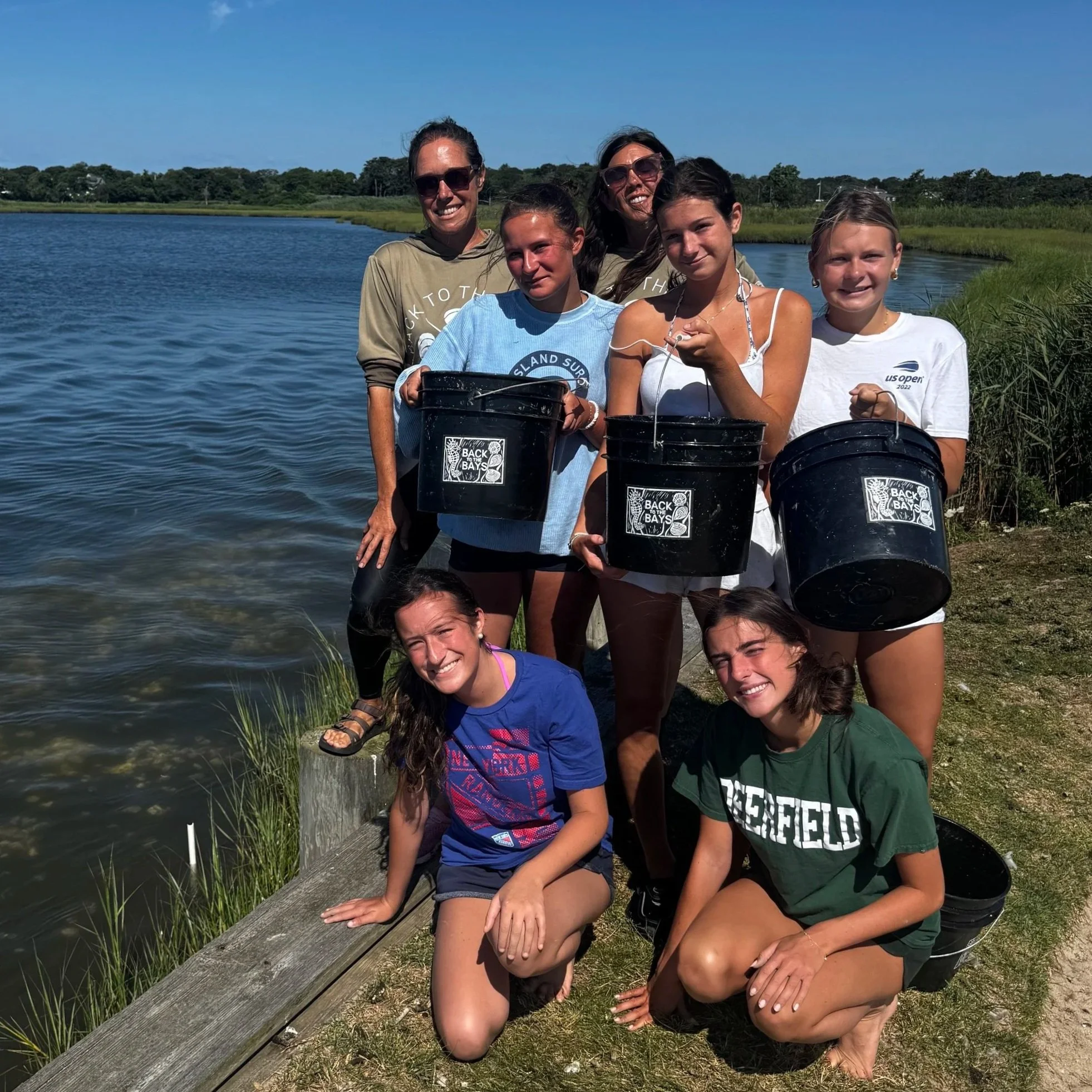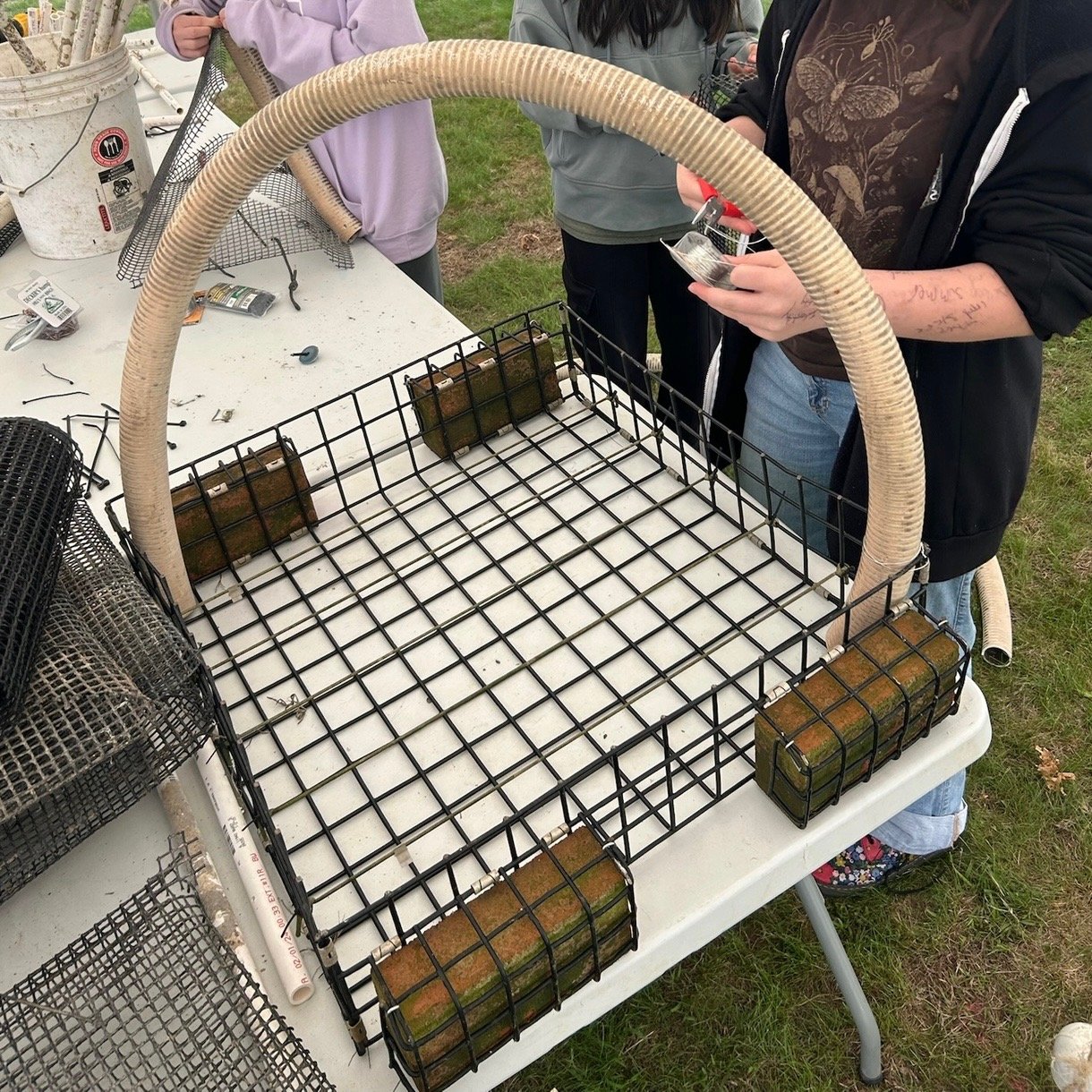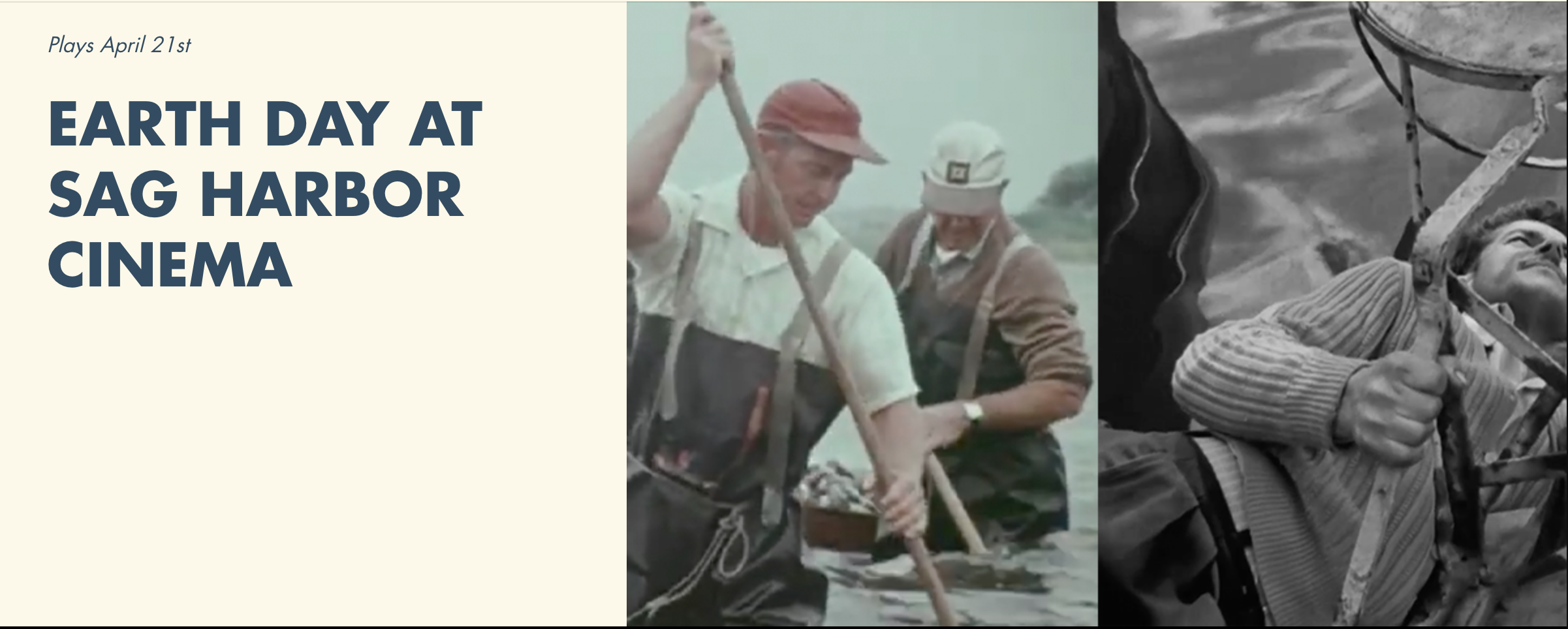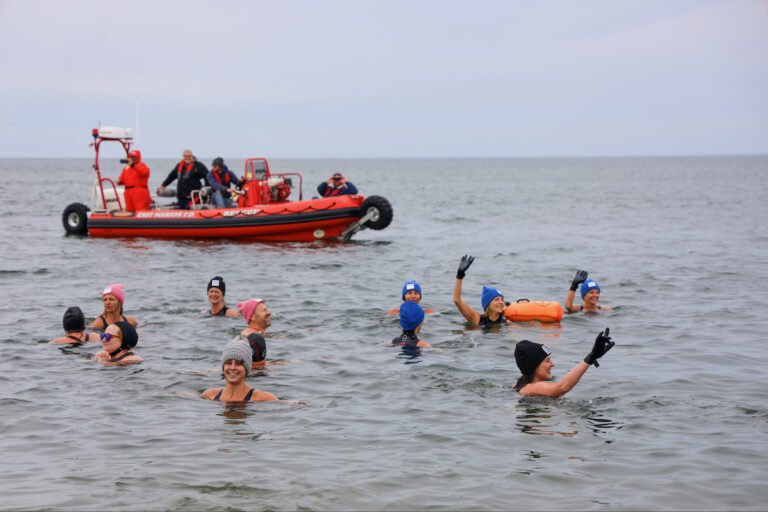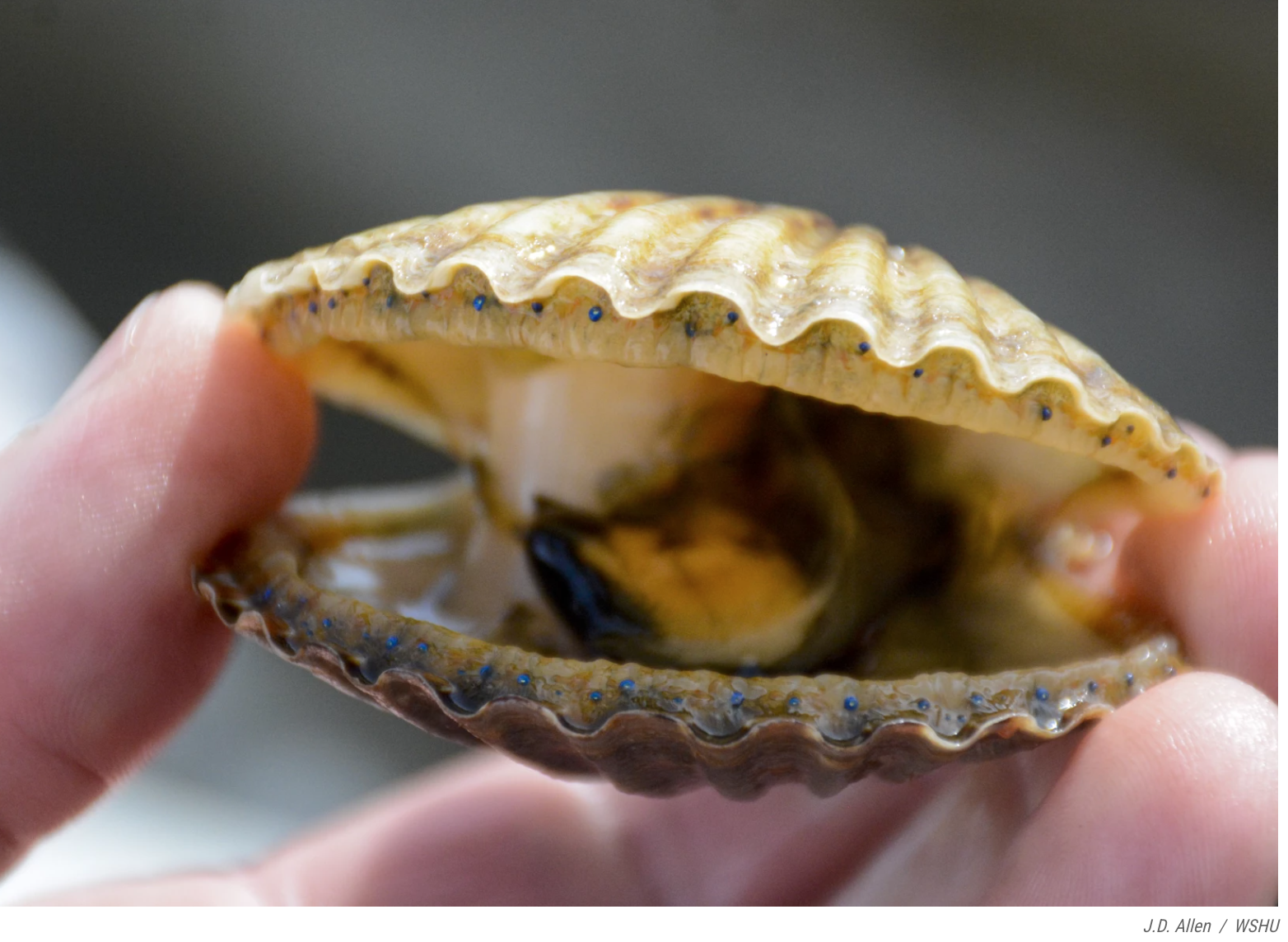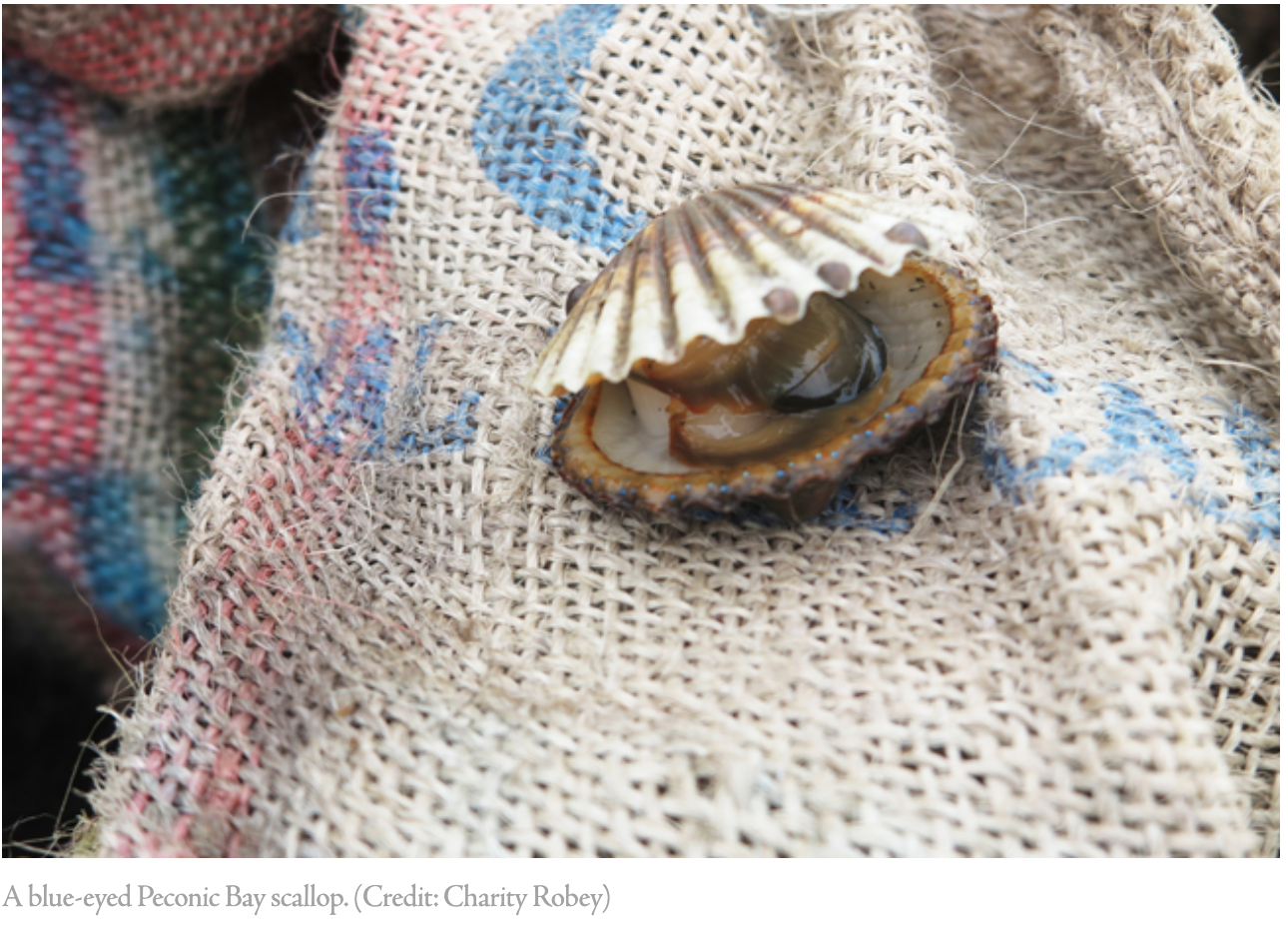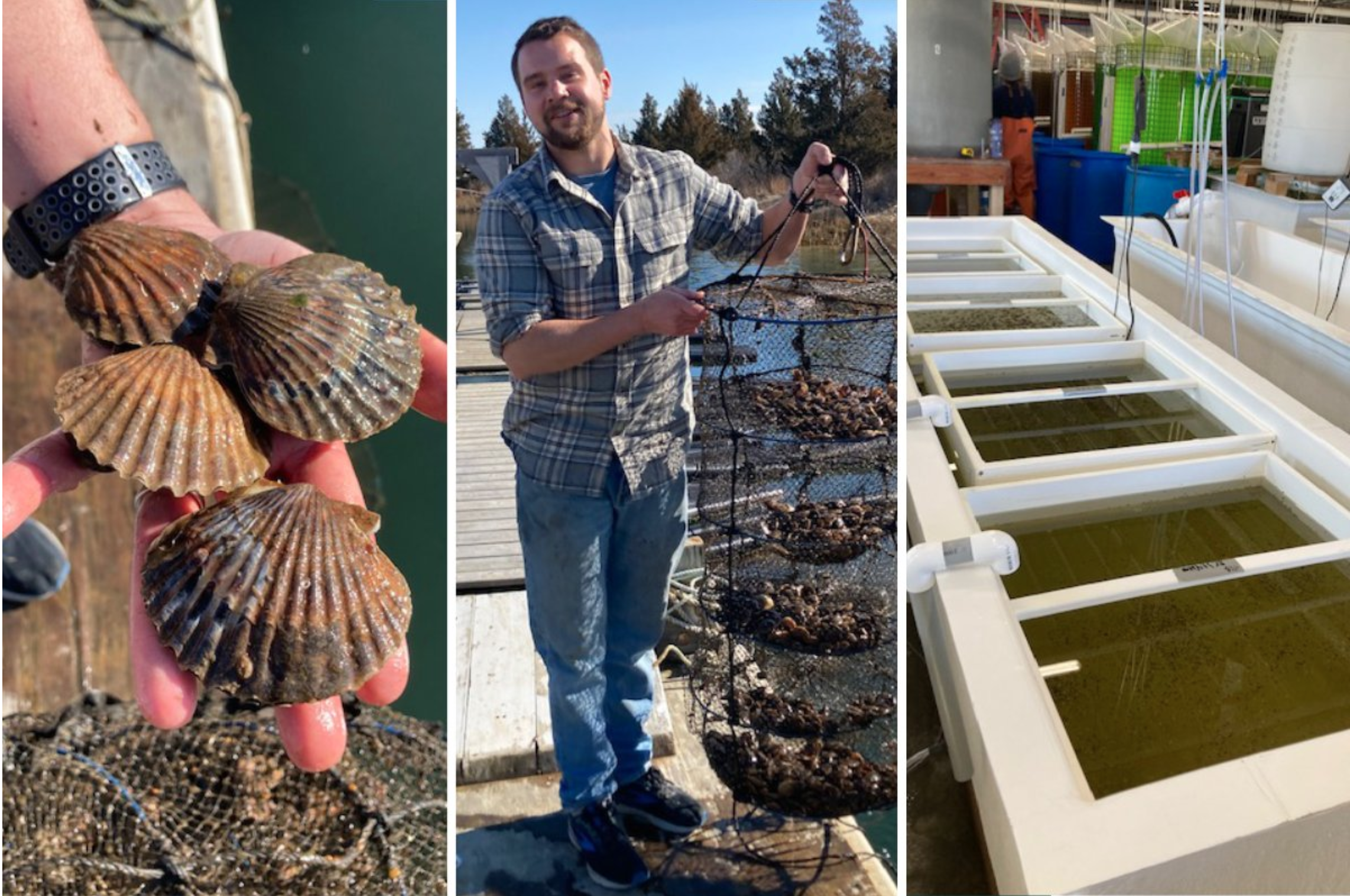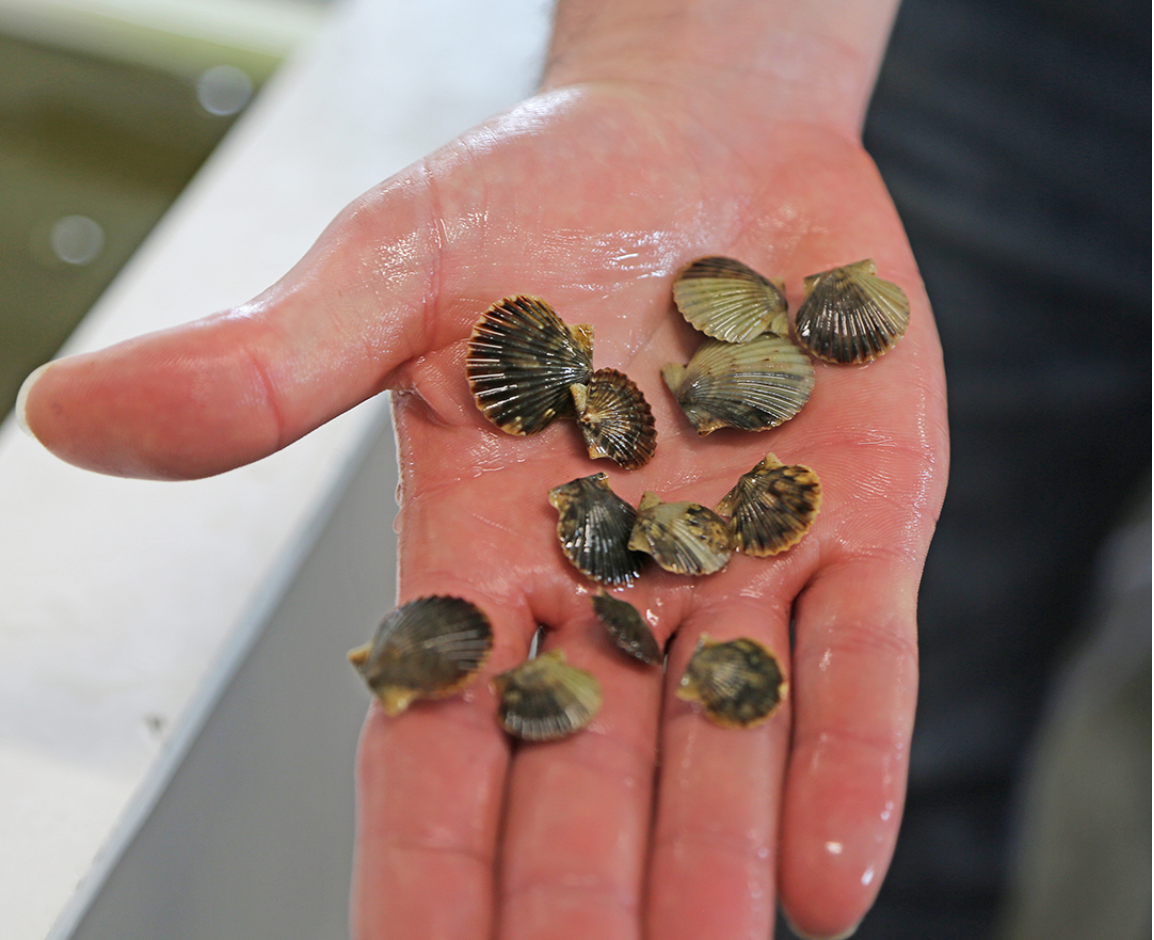
Shelter Island
Stewardship Site
Background + Goals
Cornell Marine Program has been working with the Town of Shelter Island for over 20 years, seeding approximately half a million clams, oysters, and scallops annually in town harvest waters through our Town Shellfish Enhancement Program.
In 2022, we began expanding upon those efforts by adding Shelter Island to our network of Back to the Bays Stewardship Sites! We received permission from the Town to operate a “remote setting tank” at Dickerson Creek, now serving as our Shelter Island Annex for spat-on-shell production, and to establish our first Shelter Island oyster reef located in Coecles Harbor off the first causeway. Following our pilot year reef planting, we received a significant grant through the Town’s Water Quality Improvement fund to execute additional oyster plantings, fall + spring eelgrass plantings paired with hard clam seeding, and seeding a bay scallop sanctuary.
The inclusion of Shelter Island in our Back to the Bays network supports multifaceted water quality improvement and habitat restoration that we hope will create a strong sense of community stewardship through a multitude of involvement opportunities.
In order to continue + expand upon these efforts, we have launched the Shelter Island Back to the Bays Giving Campaign and are seeking contributions of any level to help support this work. To scale up the oyster reef efforts, and expand the Back to the Bays Stewardship Site activities to include additional shellfish restoration plantings, large scale eelgrass restoration + more, we need your help! Contributions are fully tax deductible and can be made by clicking the DONATE button at the top of this page!
New in 2024, we also invite you to learn about and support our Menantic Creek Restoration Site, which is now part of our larger efforts in Shelter Island waters.
Become a Shelter Island Steward, sponsor this site, or donate today!
Recent Blog Posts
Upcoming Events
Current Work Underway
-

Shell Recycling
Coastal restaurants typically go through thousands of pounds of oyster shell in one season, all of which often gets sent to a landfill. However, these shells hold incredible ecological value! When wild oysters spawn, the larvae seek the shells of other oysters onto which they will set and grow into elaborate reef structures, offering crucial habitat for a menagerie of other marine species. In partnership with Sylvester Manor Educational Farm, we have developed a robust Shell Recycling Program that we operate with participating local restaurants. The shell that is collected supports our oyster reef restoration efforts on Shelter Island and at our other Back to the Bays Stewardship Sites.
Learn more about shell recycling.
-

Oyster Reefs
Oysters are considered a “keystone species” for marine ecosystems because not only are they incredible water filterers, they also create a complex reef structure as they grow that offers critical habitat for many important species, and helps to buffer storm surge which reduces coastal erosion. Working in tandem with our Back to the Bays Shell Recycling Program, we are building spat-on-shell oyster reefs in for Shelter Island in Coecles Harbor and Menantic Creek. These reefs are not intended to be harvested, but rather to improve water quality, restore habitat, and help enhance the wild oyster population.
Learn more about oyster reefs.
-
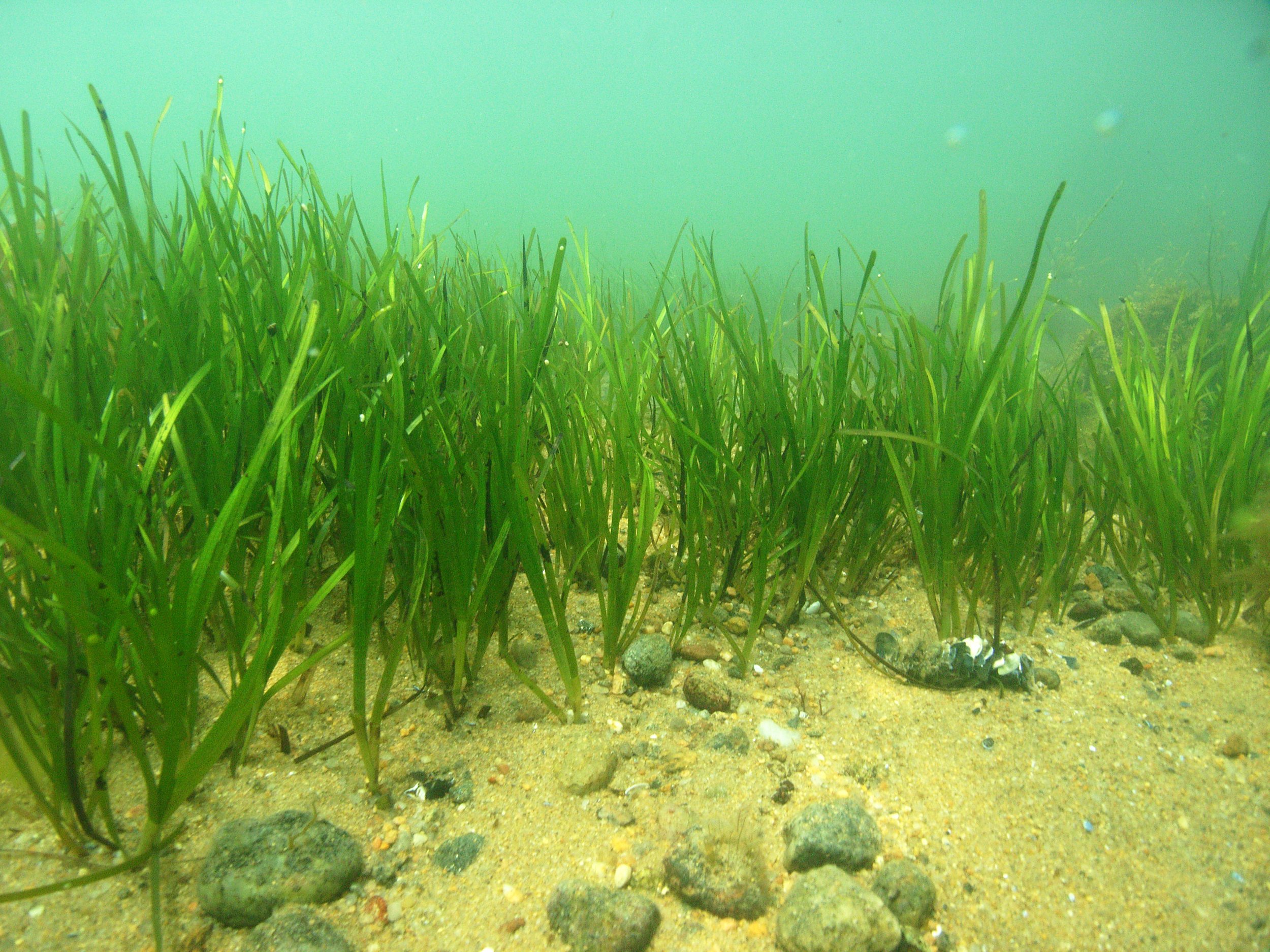
Eelgrass Meadows
While Shelter Island has some of the few remaining eelgrass meadows on the East End, they used to flourish throughout our waters. Our goal is to increase the density of the existing Coecles Harbor meadow, as well as assess and test other possible eelgrass restoration sites in Shelter Island waters. Working with the community, we conducted public listening sessions to learn more about the location of historic meadows, paired with our Habitat Restoration Team’s site suitability assessments to identify several test planting locations in 2023. Success of these initial plantings will be continuously monitored to guide future eelgrass restoration plans.
Learn more about habitat restoration.
-

Clam + Scallop Sanctuaries
Seeding hard clams and bay scallops in small areas at higher densities helps to improving the successful rearing of new cohorts of shellfish. This method is referred to as creating “spawner sanctuaries” and is commonly used in restoration efforts due to its documented success in bolstering the wild set of these species. Additionally, evidence shows that concentrating multi-species restoration activities in one area increases their overall success - for example, eelgrass helps oxygenate the sediment for hard clams and offer refuge from predators for bay scallops, while the shellfish help clear the water and increase sunlight for the eelgrass.
Learn more about shellfish restoration.
Key Partners + Funders
Sylvester Manor Educational Farm plays an important role in our Shell Recycling Program, providing a “shell curing” location for shells collected from participating restaurants and businesses that need to dry in the sun for 6-12 months. This shell curing ensures that unwanted marine organisms aren’t transferred to our bays. As an educational non-profit at the heart of the Shelter Island community, we are grateful for this partnership and look forward to helping them expand their stewardship of the land to the Island’s creeks and harbors through marine education and outreach opportunities.
In early 2023, Shelter Island Town dedicated $200k from their CPF Water Quality Improvement fund to support the expansion of this initial work to include hard clam and bay scallop seeding, eelgrass plantings, and continued expansion of the oyster reef.
The initial work to establish this Back to the Bays Stewardship Site on Shelter Island was funded in part by the Marilyn Lichtman Foundation through a grant awarded to CCE Marine to expand the Back to the Bays Initiative.
Business Collaborations
Shell Recycling
We greatly appreciate The Chequit and Salt for being part of our Shell Recycling Program. The shell contributed from these restaurant partners, ultimately becomes new Spat-on-Shell oyster reefs.
Become part of our Shell Recycling Network!
Brewery Lectures
Thank you to Shelter Island Craft Brewery for joining our list of hosts for our 2024 Back to the Bays Brewery Lecture Series.
Partner with us Attend a Lecture Series
In the News
Blog Posts
Media Release
June 28, 2022
New Oyster Reef Restoration Efforts Underway on Shelter Island
CCE Marine Program, Sylvester Manor Farm, Town of Shelter Island and Local Restaurants team up to launch a new Back to the Bays Stewardship Site!
CCE-Suffolk is a non-profit association conducting research-based programs and services that tackle major issues affecting Long Islanders. Cornell University and the land grant system allow CCE-Suffolk and our programs access to world-class resources to create a thriving and healthy Suffolk County. Our Marine Program works to improve and ensure the sustainability of Long Island waters to benefit wildlife and residents alike. Through CCE Marine Program’s Back to the Bays Initiative, extensive shellfish restoration, habitat improvement and water quality efforts are brought to communities throughout Suffolk County. With the support of community partners, a new Back to the Bays Stewardship Site is being established on Shelter Island to enable the creation of a spat-on-shell oyster reef and a shell recycling program to be launched this summer!
“CCE Marine Program has been working with the Town of Shelter Island for decades to help enhance shellfish populations in Town waters, and these efforts are now being expanded through the Back to the Bays Initiative. The addition of a satellite shellfish nursery site for remote oyster setting will enable millions of spat-on-shell oysters to be produced right on Shelter Island, and create stewardship opportunities for the community to be involved with this work,” noted Kim Barbour, CCE Marine Program Outreach Manager and Director of the Back to the Bays Initiative.
With the partnership of the Town and the support of the Marilyn Lichtman Foundation, a new remote setting location on the island now hosts a specially designed tank that will enable larval oysters to be set onto recycled oyster shell. Once large enough they will be deployed in Coecles Harbor to form a new oyster reef. The goal is to make this restoration site part of CCE’s network of “Back to the Bays Stewardship Sites” which are designated to be long term receiving areas for the spat-on-shell oysters, and also other species like eelgrass and bay scallops that CCE hopes to eventually work on restoring at this site as well. Town Supervisor Gerry Siller has expressed his support of the expansion of these efforts noting that, “The Town of Shelter Island is proud to partner with CCE in their shellfish restoration efforts. We recognize that robust shellfish populations are a critical component of a healthy marine ecosystem and we are hopeful this program can further enhance our local waterways.”
In the inaugural year the goal is to successfully produce at least one cycle of spat-on-shell and pilot the selected grow out location to ensure it is suitable to support a larger scale oyster reef in future years if funding and resources permit. CCE’s experts will also begin assessing the suitability of the Coecles Harbor location to conduct eelgrass restoration and additional shellfish enhancement projects in subsequent years.
Another key aspect of the effort being launched this year is the shell recycling effort. Larval oysters prefer to set on shell, specifically oyster shell, so by collecting it from local restaurants and curing it this summer, adequate substrate will be available to set additional oysters on next year. Sylvester Manor has generously partnered with CCE Marine to host the shell recycling site, which will be the receiving area for the shell collected for the oyster reef project. “Sylvester Manor is excited to be participating in the new Shelter Island division of Back to the Bays by serving as the "shell curing" location. This is a crucial step for ensuring that new species or diseases aren't transferred to our bays by allowing the shells to dry in the sun for 6-12 months. Our partnership with CCE will be keeping thousands of shells from entering the landfill and will help fulfill our need to be stewards of both lands and water,” said Tracy McCarthy, Director of Operations for Sylvester Manor.
Limiting shell waste from reaching the landfill and instead beneficially reusing it for this important oyster reef effort is a win, win. SALT restaurant was the first establishment on the island to enthusiastically sign on to participate recognizing this as a great effort to give back to our bays. Buckets of shell have been delivered to Sylvester Manor weekly from SALT, and additional partner restaurants will soon follow suit as CCE works to expand the recycling network.
If you are interested in volunteering, becoming a shell recycling partner, or making a contribution in support of this important work please visit https://backtothebays.org/shelter-island-stewardship-site or contact Back to the Bays Aquaculture Coordinator Kate Rossi-Snook at kr474@cornell.edu
To learn more about CCE Marine Program and its Back to the Bays Initiative, please visit backtothebays.org. Follow us on social media @CCEMarineProgram #backtothebays
